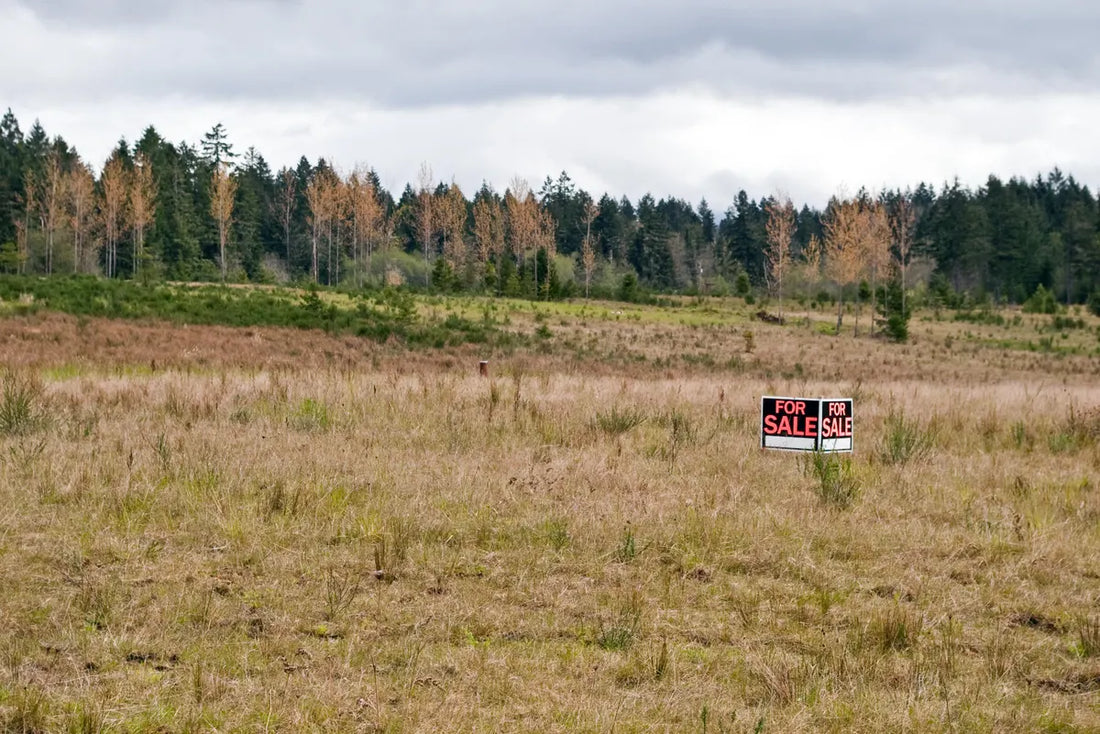Whether found via the internet or word of mouth, getting your hands on a site is the first step in you glamping journey. (image credits)
- A suitable piece of land is the biggest variable in what can help or hinder the creation of your glampsite
- An outright purchase or loan is high risk but can yeild the highest investment reward and control of your business
- Land rental can be straight forward and cheap in the short-term but may require you to give up some autonomy depending on the owner
- Land sharing could be complicated to negotiate but allows for low up front costs and better potential for a long term partner who may allow higher autonomy
The Predicament
While one might have an expert understanding of glamping and the hospitality sector, the single biggest investment that needs to be made for a glamping business is the land. As we mentioned in a previous article, (https://northernglamping.com/blogs/glamping-guide/don-t-make-these-mistakes-when-choosing-a-glamping-site) a glamping business is – in part – a real estate play. The site you choose can be a major factor in how much or how little you business appreciates.
The easiest path is of course, one where the sunk cost of the land is already there. Whether by previous purchase or inheritance, those who find themselves with a piece or rural or backcountry land have the advantage of not needing to make that major purchase. If this describes you and you want to monetize your land, then we would recommend looking into starting a glamping business. Without the risk of a big land purchase, it is much easier to create a space to share the beauty of your land with others, protect biodiversity and have a high cashflow investment.
But what if you want to start a glamping business and don’t already have the land? Land – even in rural parts of Canada – is not guaranteed to be cheap. This is especially true when you want a site that’s away from the city and off the beaten path but not so much so that it’s difficult to access from the city. We’ll go over 3 of the main strategies for getting access to the glampsite of your dreams
Outright Purchase
If you have the means, then you won’t need to read much further. Simply purchase the piece of land that satisfies the due diligence outlined in our previous article and start setting up your glampsite.
If you don’t have the money outright, or enjoy spending other peoples money instead of yours, then a loan of some sort would be needed.
This loan can be obtained through traditional financial institutions or through private funding. Traditional loans may be more certain and predictable with what can be negotiated but will come with higher interest rates. Private funding is more variable, perhaps you have friends and family with the means to loan substantial funds. If the right partners can be found, then the benefit would be to obtain a loan with lower interest than what a bank would offer.
The advantage of outright purchase is full control. Owning the property and business gives you full autonomy to build and operate as you see fit.
The disadvantage is cost and financial risk. Taking out a $500,000 loan with interest or using that much of your own money is no small undertaking. Unforeseen problems with the land or infrastructure construction could send costs spiralling past what can be afforded or what is “worth it” to you. Furthermore, spending the money on an outright purchase will extend your investment horizon by many years.
Renting Land
Many prime pieces of land are already owned. Further to this, most land owners in rural Ontario are near or past the age of retirement. This provides an opportunity to help make use of land that the owner does not have the physical ability (or will) to continue monetizing. As previously mentioned, glamping would protect the natural value of the land which is likely a desirable outcome for the landowners.
The benefits to this strategy would be a lower initial capital expenditure and access to land that would otherwise be unavailable. The land could also have built infrastructure (e.g. a well or municipal connection) which could be used, further lowering investment costs.
The drawbacks to this strategy would be more variability in what can be negotiated. There is the rental fee, lease timeline and extend of autonomy. Too high of a rental payment leaves very little money coming back to the business, especially in the early stages. Furthermore, while a loan can be fully paid off, the rental fee would continue to be paid as long as you are tied to that site (which is very long once you have invested all the effort in building the business). A timeline would need to be agreed on that gives enough room to build and run the business for sufficient years. Avoiding a situation of a sudden non-renewal of the lease after effort has gone in to starting the business but before major profits are generated is key. Finally, extent of autonomy is something to be careful of in negotiations. The landowner may want to have a say in major aspects of the business. Their opinions could also come into conflict with yours, therefore, retaining as much autonomy over the business as possible is needed.
Sharing Land
Land sharing is very similar to land renting in that a deal is negotiated where you gain use and access to land owned by another individual. The difference is that this agreement would be an alternative arrangement to a rental/pay to use model. If you don’t want to sacrifice cash flow to rental payments (especially important in the early days) then this is an option to be explored.
Equity in the business could be traded for use of the land. Alternatively, you may find a landowner who wants to maintain their land but can’t physically or financially. In this case, stewardship and maintenance of the land could be traded for the used of it.
The pros and cons of this strategy are similar to land-renting. There is the potential for a loss of autonomy compared to an owned site if the land owner has restrictions on what can be done. In this scenario however, there might be more leverage on the business owner side. If the land owner has some equity in the business, then the commitment becomes longer-term and less transactional. The land owner may then allow more autonomy in order to aid with the growth of the business (and therefore their own investment). Another aspect is that if the landowner has outsourced and become reliant on you for care of the land, then they are more likely to allow more autonomy for the glamping operations. This could be by way of good faith that has been built or to keep you happy because of their increased reliance on you (leverage that you have).
Takeaway
The beauty of business ownership is the freedom to come up with your own creative solutions. If you don’t already have acres of prime natural land sitting around collecting dust, then there are multiple ways of getting access to that without taking out a risky loan. However, with risk comes reward. Once a loan is paid off and a sustainable glamping business is operating, you will have ownership of both a business and real estate. These investments (managed correctly) would complement each other thereby multiplying their appreciating value.

